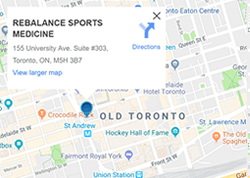Pilates for Bladder Incontinence, Sexual Dysfunction and Prolapse
 Do you suffer from bladder incontinence? Do you have to use pads to prevent leakage? Do you have sexual dysfunction? Do you have a prolapsed bladder or prostate? If so, you might be happy to learn that many of these issues can be resolved with simple individualized Pilates based exercises that can be applied to both men and women. Read on…
Do you suffer from bladder incontinence? Do you have to use pads to prevent leakage? Do you have sexual dysfunction? Do you have a prolapsed bladder or prostate? If so, you might be happy to learn that many of these issues can be resolved with simple individualized Pilates based exercises that can be applied to both men and women. Read on…
Pelvic Floor Pilates is simple and effective. By strengthening the supportive muscles of your pelvic floor, the foundation of your core, Pelvic Floor Pilates addresses an important and often forgotten group of muscles.
Our pelvic floor muscles act as a basket for our abdominal muscles and organs. They support the contents of the pelvis, abdomen and trunk and improve the function of these regions. It has been scientifically proven that all of our core muscles fire more effectively and efficiently when the pelvic floor muscles are engaged first.
Women notice their pelvic floor engagement when they turn on and off the flow of urine. Men notice their pelvic floor muscles when they enter a cold lake and lift their testicles up from behind to avoid the cold temperature. Through Pilates instruction, clients learn where these muscles are in their body and when peak engagement is needed during each exercise so you can achieve the greatest benefit from each movement.
The Pelvic Floor Pilates program includes 10 exercises, each with 3 levels of endurance, for the progressive recovery of the pelvic muscle control and balance.
There are 4 main benefits of Pelvic Floor Pilates exercises:
- To strengthen pelvic floor muscles so they can resist the pressure against the weight of moderate to full bladders, gravity and body weight.
- To teach control as we discover unknown muscles and our role in activating them. Control of our movements is at the essence of mindful movement. If we know what should be used, when; we learn control.
- To increase the strength of the layers of surrounding muscles, specifically our core muscles: Transversus Abdominus, Obliques, Rectus Abdominus, Multifidus and Gluteal muscles.
- To teach relaxation of the pelvic floor. A lot of people lead busy, hectic lives and develop imbalances because they are in a seated position for hours everyday. When our muscles are repetitively held in one position, we constantly engage them (hypertonicity) which tightens and restricts normal movement of these muscles. This will influence the flow of fluids and release of bowel movements. Learning how to relax the pelvic floor is just as important to our body as learning how to engage these muscles.
Done consistently you regain the freedom of living in a body with normal muscle control. Contact us for Pelvic Floor Pilates with Sarah Wallace at Rebalance Sports Medicine. This type of Pilates can be covered under your physiotherapy benefits if you see our Pelvic Floor Physiotherapist in conjunction. Pelvic floor physiotherapy consists of internal and external assessments & treatments. Please refer to the following blog to learn more about how pelvic floor physiotherapy can help with incontinence. Watch the results begin!
Rebalance Toronto
Rebalance Sports Medicine is a multidisciplinary clinic in downtown Toronto offering physiotherapy, chiropractic, registered massage therapy, sports medicine, naturopathy, Pilates and more.



 What to Expect From Your First Physiotherapy Visit
What to Expect From Your First Physiotherapy Visit The Benefits of Fascial Stretch Therapy [Demo]
The Benefits of Fascial Stretch Therapy [Demo] How Does Physiotherapy Work?
How Does Physiotherapy Work? Best Exercises for Low Back Pain
Best Exercises for Low Back Pain